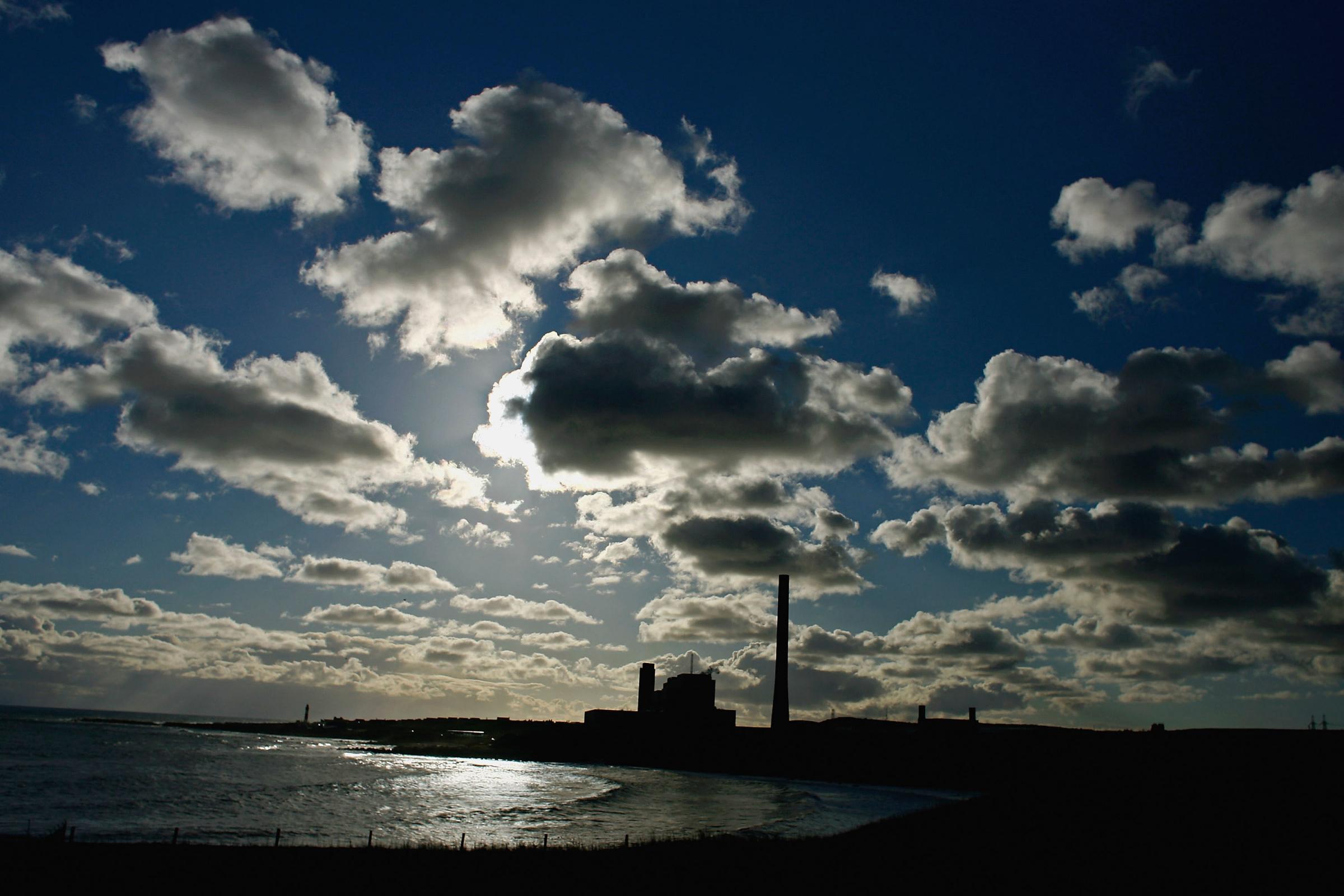

A PROPOSED gas plant at Peterhead is on “rotten foundations” and could “seriously jeopardise” Scotland’s climate targets, the Scottish Government has been warned.
Environmental campaigners have urged ministers to reject a “greenwash hogwash” planning application from energy and oil companies to build a large new gas-fired power station on the Aberdeenshire coast.
The companies said that the plant would cut its climate pollution by capturing and storing its carbon emissions. But campaigners argued the technology to do this was “unproven” and had a “long history of repeated failure”.
Critics also feared that the new plant would operate alongside, rather than replace, the existing gas station at Peterhead – and that emissions from the site could double. The old plant is already Scotland’s biggest single carbon polluter.
The energy companies insisted that the new gas plant would “ultimately replace” the existing plant, which was “absolutely vital”. They said “the reality” was that the new plant would not go ahead without carbon capture and storage.
The Scottish energy company SSE and the Norwegian oil firm Equinor have submitted an application to construct a “low-carbon” gas turbine at Peterhead to generate up to 910 megawatts of electricity. Given the project’s size, it requires approval from Scottish ministers to go ahead.
In their application, the company assumed that at least 90% of the carbon dioxide emissions from the new plant would be captured and stored. But they said that would still result in emissions of 225,000 tonnes every year and 5.6 million tonnes over the plant’s 25-year lifetime.
According to SSE’s own climate impact assessment, that would mean that the new plant would be responsible for over 2% of Scotland’s total emissions in 2036. If carbon pollution is cut as planned, the plant would end up being responsible for 16.5% – a sixth – of the country’s emissions by 2044.
SSE and Equinor hope that the new gas plant could be up and running by 2027. But the carbon capture project to which it was supposed to connect, known as Acorn, was refused initial UK Government funding in October 2021.
Instead Westminster put the project on a “reserve” list after two projects in England and Wales. UK ministers have promised to fund more projects to capture carbon “by 2030”.
Carbon capture is designed to trap the pollution produced when fossil fuels are burned for energy to stop it causing global warming. The carbon is meant to be stored in a safe location, such as under the North Sea.
It has been heralded by industry as an important technological answer to the climate crisis. It is also central to Scottish Government plans to cut climate pollution.
However, critics described it as a “false solution” and pointed out that only a few planned projects have actually come to fruition in the last ten years. They argued that the technology distracted from the urgent need for society to move away from fossil fuels.
The new gas plant would be built on a site next to the existing gas plant to the south of Peterhead, near Boddam. The Ferret revealed in April 2022 that the existing plant had been Scotland’s biggest single climate polluter in 2018, 2019 and 2020, emitting 1.3 million tonnes of carbon dioxide in 2020.
SSE and Equinor said they planned to reduce the capacity of the existing station from 1180 megawatts to around 300 megawatts. But the old station would “remain available to operate” at the same time as the new station, if needed.
The environmental group Friends of the Earth Scotland (FoES) has lodged a formal objection to the new plant. It described the developers’ timescale for the introduction of carbon capture as “highly optimistic”, saying that there had been a “clear historic failure” to deliver the technology.
THE group also questioned the proportion of carbon that would actually be captured. It pointed to research suggesting that new projects only captured around 60%, rather than the 90% envisaged by SSE and Equinor.
“The proposal expects reduced capacity at the existing Peterhead power station, but does not rule out both plants operating at full capacity,” said the FoES objection.
“It is not clear whether what is being proposed is in fact an additional rather than a replacement power plant. In the not unlikely event that carbon capture fails to deliver this could result in substantially increased carbon emissions and seriously jeopardise meeting our climate targets.”
FoES warned that the new gas plant would “lock in” the continued use of fossil fuel for decades. “This application risks doubling emissions from the site,” said the group’s climate campaigner Alex Lee.
“Carbon capture and storage has a long history of repeated failure and even the Scottish Government has admitted it will not happen this decade. But the whole Peterhead project is to be built on the rotten foundations of this unreliable techno-fix,” Lee told The Ferret. “With full power to determine whether the new Peterhead gas plant should go ahead or not, it’s time for the Scottish Government to show real climate leadership by rejecting it, and committing to the decisions that need to be made for a just and rapid transition away from fossil fuels.”
The climate protest group Extinction Rebellion Scotland mounted a blockade of the SSE’s existing Peterhead plant in June 2021. “It looks like SSE’s greenwash hogwash continues,” said the group’s spokesperson Alex Cochrane.
“Deliberately creating gas emissions and then relying on unproven technology to suck them out of the air is perverse and dangerous. The only safe and just options are to reduce emissions at the source and switch our energy to renewable sources.”
THE Scottish Government has set a legally binding target for Scotland to reach net-zero climate emissions by 2045. But its plans have been criticised for relying too heavily on carbon capture.
The government’s Climate Change Committee warned in December 2021 that ministers needed to develop “clear contingencies” in case carbon capture and other technologies failed to deliver. Holyrood committees have also urged the need for a “plan B”.
The Scottish Government’s own monitoring report concluded in May 2022 that technologies such as carbon capture could not deliver “at the pace assumed” in ministers’ plans. One reason cited was Westminster’s lack of initial funding for the Scottish carbon capture project.
The Scottish Greens, who are in government with the Scottish National Party, told The Ferret that a new gas plant was “clearly not compatible with tackling the climate crisis”.

Green MSP for North East Scotland Maggie Chapman (above) pointed out that carbon capture had failed to deliver in other countries. “The fact that there is still no clarity about whether this new development will replace, or supplement, the existing plant gives me even greater cause for concern,” she said.
According to environmental campaigner Dr Richard Dixon, even if carbon capture does work, the new plant at Peterhead would still be pumping out “hundreds of thousands of tonnes of climate emissions” for years to come. It would be “crazy” to build a plant that could become Scotland’s biggest polluter in the 2040s, he said.
The climate expert and former chief executive of the Scottish Environment Protection Agency Professor James Curran highlighted research published on June 27 suggesting that the UK could halve its energy demand by 2050 by increasing energy efficiency.
“That must be the priority, rather than pursuing unproven and expensive carbon-removal technologies that will just cost us all more,” he said.
SSE and Equinor, however, pointed to advice from the Climate Change Committee in 2019 that carbon capture was a “necessity, not an option”. They maintained that the northeast of Scotland was “incredibly well placed” to be a frontrunner for the technology.
“Peterhead Power Station remains absolutely vital for the electricity system, providing crucial flexibility to keep the lights on while enabling the extremely high penetration of renewable energy in Scotland,” said a spokesperson for both companies.
“Rather than taking the easy decision to sell the station – which would make no difference to its running hours or emissions – we are instead taking responsibility by progressing plans to decarbonise Peterhead.”
The spokesperson added: “The new plant will ultimately replace the existing station, which we have already said we don’t foresee running un-abated beyond the end of this decade. This will deliver huge emissions reductions and the reality is the project will not proceed unless it can capture at least 90% of emissions.
“Indeed, we are working to secure even higher capture rates. The task now is to deliver carbon capture at Peterhead as quickly as possible.”
The Scottish Government stressed its commitment to becoming a “net-zero-nation” by 2045. “Carbon capture, utilisation and storage will be a vital part of our energy transition that can drastically reduce emissions from electricity generation,” it said.
Westminster’s failure to give initial funding to Scottish carbon capture was “a serious mistake” that lacked ambition and leadership, the Government argued. Scottish ministers had offered £80 million to help the project.
“It would be inappropriate to comment on a live planning application,” added a government spokesperson.
The Ferret is an editorially independent, not-for-profit co-operative run by its journalists and subscribers. You can find it at https://theferret.scot/ and can subscribe for £3 a month here: https://theferret.scot/subscribe/







